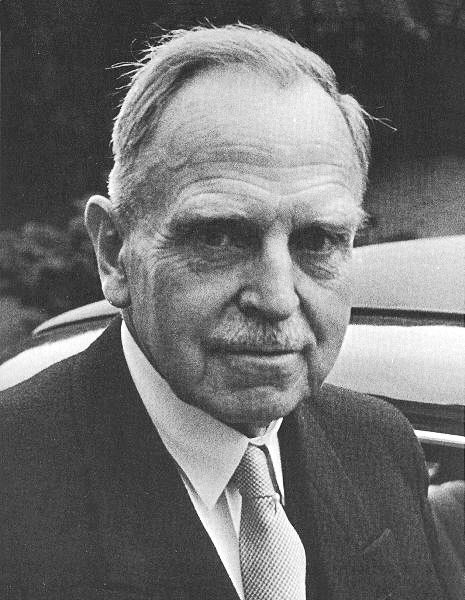Otto Hahn (1879 – 1968) was a German chemist and winner of the 1944 Nobel Prize in Chemistry for his discovery of nuclear fission.
Hahn was a pioneer in the fields of radioactivity and radiochemistry and is widely regarded as the “father of nuclear chemistry.” Hahn’s most spectacular discovery came at the end of 1938 when, while working jointly with Fritz Strassmann, Hahn discovered the fission of uranium. This discovery earned Hahn the Nobel Prize in Chemistry in 1944, and led directly to the development of the atomic bomb.
As a chemist, Hahn was initially reluctant to propose a revolutionary discovery in physics. Lise Meitner and her nephew, Otto Frisch, in Sweden, came to the same conclusion and were able to work out the basic mathematics of nuclear fission–the term that was coined by Frisch. Over the next few months, Meitner and Frisch published two articles discussing and experimentally confirming this hypothesis.
Lise Meitner would later write about Hahn’s important discovery in 1963:
“The discovery of nuclear fission by Otto Hahn and Fritz Strassmann opened up a new era in human history. It seems to me that what makes the science behind this discovery so remarkable is that it was achieved by purely chemical means.”
Scientific Contributions
Though Hahn is best known for his discovery of nuclear fission, he also made several other important scientific contributions in the fields of chemistry and physics. While at the University College of London, Hahn worked on radiochemistry and discovered a new isotope called radiothorium (thorium-228) in 1904. Hahn would go on to discover a number of other radioactive isotopes, including polonium-212, lead-210, and thorium-227. In 1909, Hahn discovered radioactive recoil.
During World War I, Hahn was conscripted into the German Army, where he was placed in a special unit for chemical warfare. Hahn’s unit developed, tested and produced poison gas for military purposes, and was sent to both the western and eastern front lines.
Hahn’s discovery of nuclear fission led many to suspect that he was working on the German project to develop an atomic bomb. However, Hahn never worked on Germany’s atomic program and instead spent most of his time studying various radioactive isotopes. Nonetheless, Hahn and other leading German physicists, including Max von Laue, Werner Heisenberg, and Carl Friedrich von Weizsäcker, were taken into custody by members of the Alsos Mission and interned at Farm Hall, Godmanchester, England from July 1945 until January 1946.
At Farm Hall, the German scientists learned of the dropping of the American atom bombs on Hiroshima and Nagasaki. Hahn was on the brink of despair, as he felt that his discovery of nuclear fission led to the death and suffering of tens of thousands of innocent Japanese people. Early in January 1946, the group was allowed to return to Germany.





